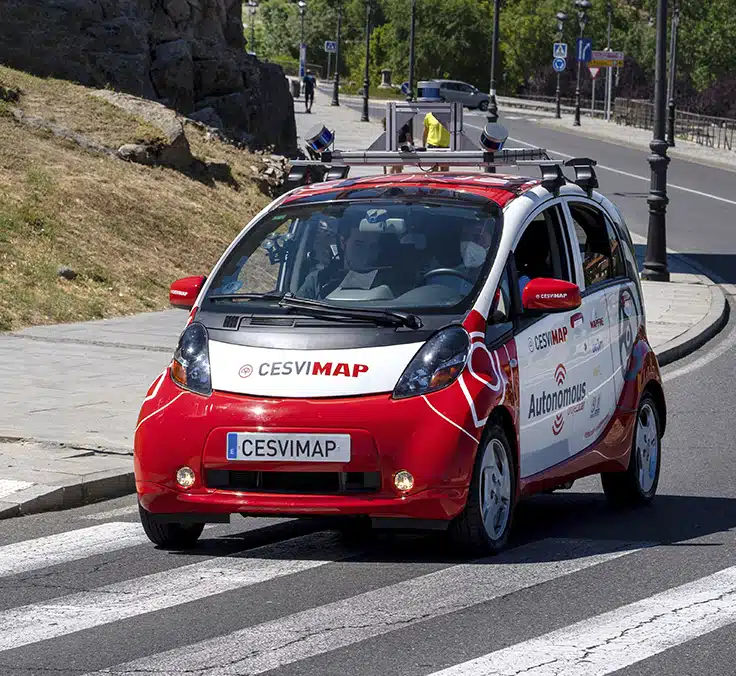The present and future of cities involves connectivity
The world’s population has been experiencing constant growth for decades. The change in people’s behavior and needs, together with the sociodemographic changes that we have been experiencing for more than half a century, has led to the highest population concentration in cities.
Specifically, approximately 56 percent of the world’s population – 4.4 billion inhabitants – lives in these cities, a trend that is expected to continue upward and even double by 2050. According to data from the World Bank, for that half of the century, “almost 7 out of 10 people will live in cities.”
In this context, in order for the development of metropolises to be sustainable and respectful, it is necessary for public and private institutions to manage resources and the population itself. For this, innovation and technology are fundamental: connected cities are the today and tomorrow of these territories.
Connectivity to make cities smarter
The digital transformation that all sectors, including the public sector, are undergoing, thanks to the emergence and improvement of technologies such as the Internet of Things (IoT), the Internet of Everything (IoE) – which has evolved as a term from IoT to address the interconnections that occur between people, physical elements, data, and processes – 5G networks for faster information exchange, and, in general, everything related to sensorization and the use of connected devices, is enabling the development of connected cities.
At the community level, in the European Union, Next Generation funds are reaching countries to digitalize and modernize national, regional, and local companies. In the case of Spain, for example, there is the Recovery, Transformation, and Resilience Plan, which not only includes these funds, but also national budgets for the same scope.
Digitization measures are also in place in South America. Brazil, for example, has the gov.br platform, which sets forth the country’s digital governance strategy. Mexico’s National Development Plan is also working on this line. In the US, the public investment program promoted by President Joe Biden also has a strong impact on public administrations.
All these investments in the public administration, along with the commoditization of devices in the eyes of consumers and businesses, and increased accessibility to the necessary technologies, are making connectivity the central axis of many of the projects and changes currently taking place.
For the public sector itself, this is translating into process and productivity improvements, as well as more optimal resource management (monetary, material, and human). People are seeing that we have much more information at our disposal than in the past to make more informed decisions, to be more aware of what is happening in our city, etc., and that public services are adapting to their demand.
Summarizing all of this, thanks to connected cities, public transportation routes can be optimized, people can be informed about road closures they commonly use – thanks to connected vehicles and their connection to IoT devices transmitting data that public authorities can utilize – areas in need of new public facilities can be identified, and our Internet connection speed in the city can be improved.
Data, the soul of cities
The data stored by the aforementioned devices, as well as the digital environments and ecosystems, is the perfect cocktail to nurture all projects and innovations, as well as to adapt the city to the needs of the territory and the population.
The capture, storage, and analysis of all the data that surround us is the basis of the digitalization processes. Technologies such as data analytics, big data, artificial intelligence (AI), machine learning (ML), deep learning, etc., allow public authorities to extract the full value of the information, making the whole process of decision making and city management more efficient and better.
Thanks to the insights provided by data and software as a service (SaaS) based on the technologies mentioned above, urban mobility can be optimised, autonomous drivingcan be given the green light, traffic management can be improved, areas of the administration in which citizens are most interested can be identified and the procedures they can carry out can be improved, certain repetitive tasks can be automated, and a host of other possibilities can come to fruition.
Digital transactions and GIS
Digital twins are an essential element in connected cities.
This technology, which is a digital representation of the real environment, opens the door to a multitude of tests or drills. It is used to visualize, analyze, and control all kinds of parameters and processes, allowing trial and error tests to be carried out before making any decision, developing a project, or implementing any element or decision that has an impact on the city.
To create these twins, data from diverse sources must be available. Geographic Information Systems (GIS) work very effectively in this context, incorporating geographical data from the environment (spatial location of terrain elements, weather, population density in different city areas, businesses, etc.) to represent the digital twin through maps that can be updated in real-time.
By merging digital twins and GIS, and adding BIM models, IoE, or Computerized Maintenance Management Systems (CMMS) to the equation, the models created are highly precise and enable public authorities to simplify workflows, optimize environmental analysis, enhance urban and logistical planning, and more.
For example, with these digital twins, it is possible to analyze at which locations in the territory it is most optimal to construct tall buildings and how they should be positioned to be sustainable. These digital twins also enable inspections of water or electrical infrastructure to determine where maintenance is necessary, modify waste collection services based on the needs of different areas, open new public transportation routes and improve waiting times, or analyze on-street parking and take action accordingly, among many other examples.
Insurance companies and their role in connected cities
In this context, insurers play a decisive role in managing associated risks.
While technologies bring many benefits, they also bring challenges. Their responsible use or ensuring data protection and the ethics of the models created are two of the determinants. The insurance industry has the responsibility to support public authorities and private companies in the deployment of solutions, services, or products, both for preventive purposes and to provide backing in the event of any unexpected issues.
At MAPFRE Spain, we have the Business Development Department for Large Cities, which is responsible for defining and implementing value propositions aimed at the customer. The goal is to address the needs of specific niches or groups that are generating new business opportunities in large cities.
Thus, key niches/groups have been identified and prioritized and value propositions have been deployed that respond to the needs of pets and their owners, young people and seniors, among others.
RELATED ARTICLES:




